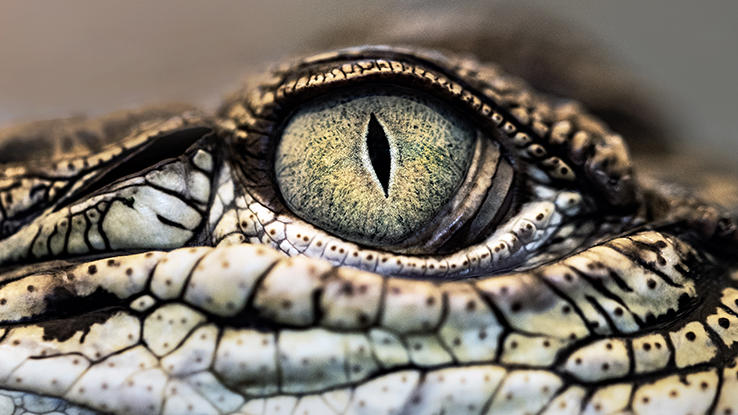
Danger comes in many forms — some that cause little more than a quick skipped heartbeat and some that land you six feet under. When it comes to dangerous creatures, the world is filled with species that pose a threat to humans.
From a dangerous fish known to attack snorkelers to an unseen parasite that kills more than 200,000 people each year, we’ve rounded up 25 of the most dangerous species on the planet.
25. Mute Swan
Yes, swans are beautiful and inspire romance — they mate for life — but they are also noisy, obnoxious and might even try to drown you if they perceive you as a threat. Keep this in mind the next time you think about approaching a swan’s nest while you’re casually feeding the ducks during a stroll in the park. Swans are extremely protective of their territory, and they’re far more powerful than you might think.
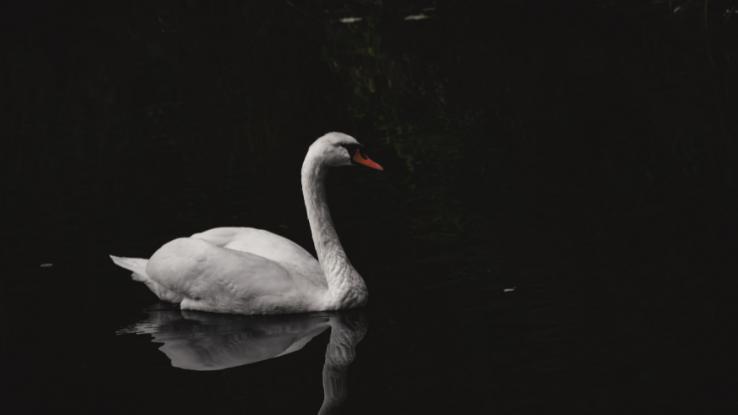
In 2012, a 37-year-old Illinois man who worked for a company that uses swans to keep geese off residential property was attacked by a swan while rowing his kayak on the complex’s nearby pond. The swan rammed his kayak, overturned it and the man drowned, leaving behind a wife and two children. The man could swim, but eyewitnesses said “the swan appeared to have actively blocked him” from swimming to shore.
24. Red Imported Fire Ant (RIFA)
Ants are amazing, impressive creatures. In fact, entomologists E. O. Wilson and Bert Hölldobler even won a 1991 Pulitzer Prize for their non-fiction book The Ants. However, for those without any interest in the insect world, ants are the annoying little biters that ruin picnics and invade pantries. It turns out, some species can also cause widespread medical trauma and economic devastation.
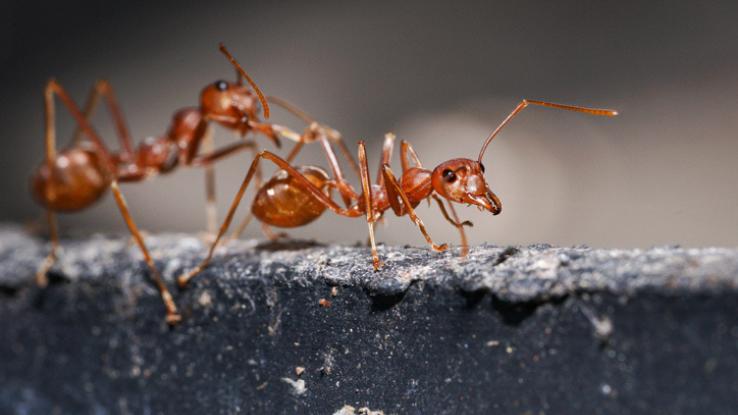
Native to South America, the red imported fire ant (RIFA) is an invasive species destroying habitats in the United States, China and Australia. In the U.S. alone, they cause billions of dollars of damage each year to public health, agriculture and infrastructure. Known for their painful stings that cause raised welts and pustules, these ants like to build their mound nests “near structural foundations or in landscaping” and “can gain access to buildings through HVAC systems and AC units.”
23. Titan Triggerfish
Although sharks and barracudas have more daunting reputations, another sea creature actually poses more danger to divers and snorkelers. Found throughout the Indo-Pacific region, the striking titan triggerfish attracts underwater photographers with its interesting look but is uniquely aggressive and territorial, especially when guarding its nest during the reproductive season.
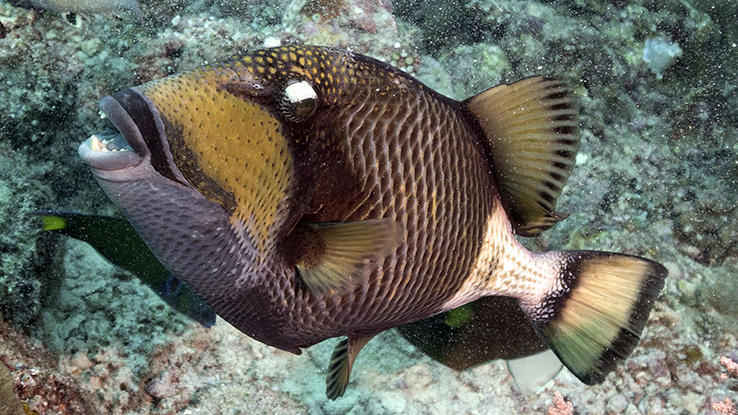
Despite measuring only a couple of feet in length, this fish is known to ram and bite humans with some frequency, sometimes causing serious injuries and even taking off ears. They guard their territory in a vertical cone, which means swimming to the surface doesn’t help. You have to swim horizontally away from them to escape. Recommended tactics to protect yourself include using your fins or an underwater camera to ward them off.
22. Tropical Rat Flea
Rats are disgusting creatures — yes, even the much-beloved “Pizza Rat” that inspired a brief rebranding for minor league baseball’s Staten Island Yankees. So, what could be even more hideous than rats, which at least feed pet snakes and help out research scientists? Rat fleas.
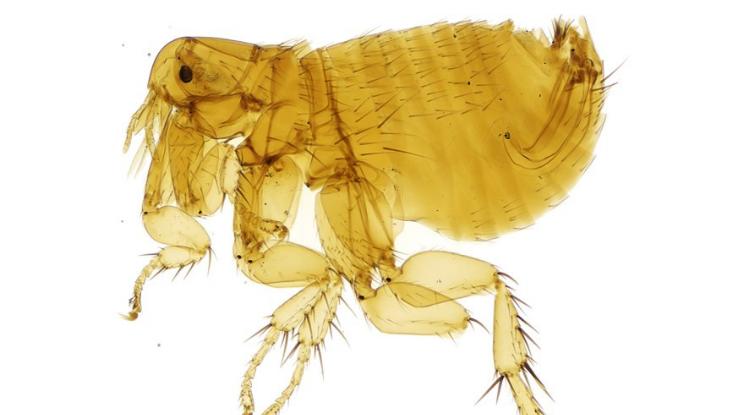
Rat fleas spread bubonic plague and are widely blamed for the Black Death that killed more than 50 million people in Europe in the 14th century. They also spread typhus and other diseases and are practically invisible — you won’t know they got you until the bites appear. Despite measuring only a couple of millimeters, they can leap up to 200 times that length.
21. Komodo Dragon
Komodo dragons — basically modern-day dinosaurs — are the only lizards that prey on humans. In addition to isolated fatal attacks, the giant lizards are guilty of severely maiming humans. One attacked movie star Sharon Stone’s husband in 2001, badly disfiguring his foot.
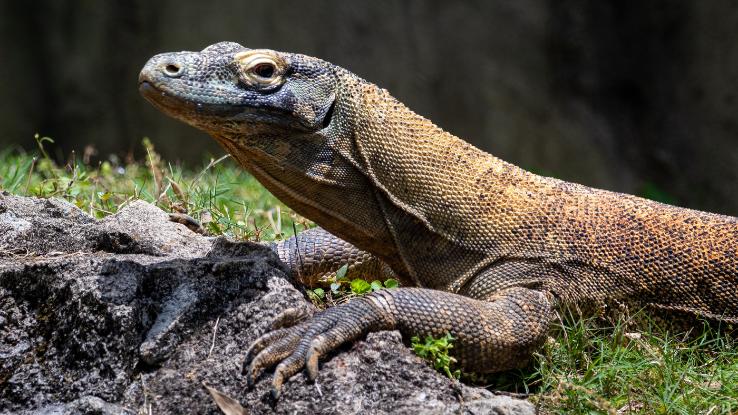
Not to be confused with the more common — and equally intimidating — monitor lizard, this species can inflict multi-faceted damage. As National Geographic described it: “The dragon has venom glands, which are loaded with toxins that lower blood pressure, cause massive bleeding, prevent clotting and induce shock. They bite down with serrated teeth and pull back with powerful neck muscles. The result: huge gaping wounds.”
In the 1990 Matthew Broderick film The Freshman, a dragon being smuggled by the Mafia sneaks out of the transport car, and hilarity ensues when Broderick’s character rescues it. The movie focused on humor, but illegal smuggling is a very real threat to the continued existence of the Komodo dragon, and Indonesian authorities have taken steps to protect it and its habitat.
20. Southern Cassowary
The southern cassowary, also known more whimsically as the double-wattled cassowary, is one of the tallest and heaviest birds on Earth. Native to the rainforests of New Guinea and Australia, the birds don’t quite measure up to the ostrich, but they pose a much greater threat. As some signs in Australia caution: “Be Cass-o-wary.”
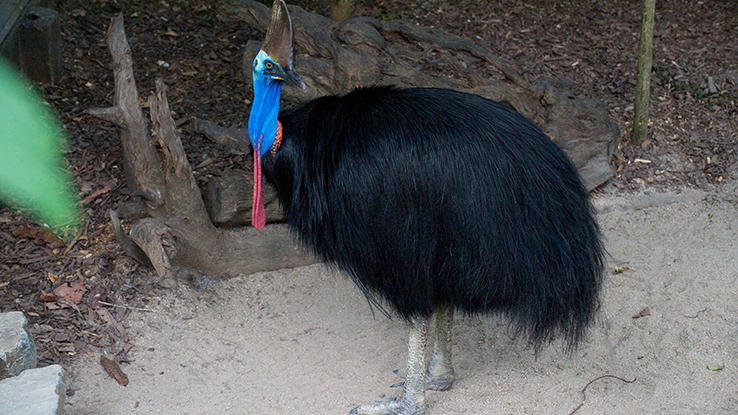
Despite its amusing appearance that resembles a peacock crossed with a turkey on steroids, the cassowary holds the distinction of being the world’s most dangerous bird, according to the Guinness Book of Records. Although you might think you could try to fight off this ill-tempered fowl, “on their inner toes you’ll find a super-sharp claw that can be as long as five inches.” They’re basically feathered Freddy Kruegers — with a bad attitude.
19. Polar Bear
When they’re not starving to death stranded on melting sea ice, polar bears are remorseless predators in a sparse habitat that spans the region north of the Arctic Circle. They can weigh upward of 1,500 pounds, easily more than enough to break the ice.
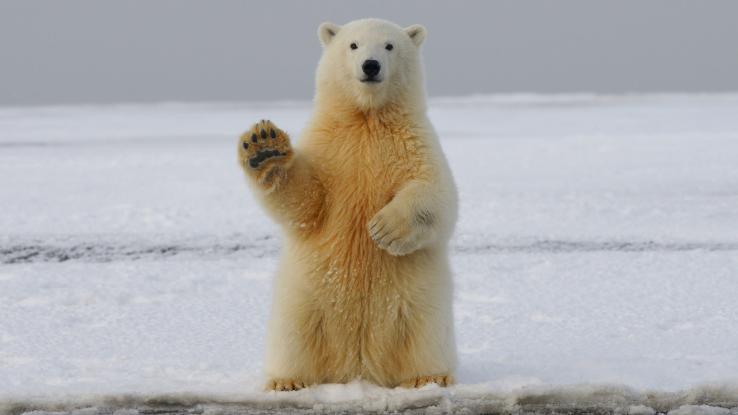
Polar bears are hypercarnivores, meaning their diet consists of more than 70% meat, substantially higher than any other bear species. With a voracious need to consume more than 12,000 calories per day during hunting season and increasing habitat loss diminishing their food sources, polar bears can be particularly aggressive when encountering humans.
18. Brown Recluse Spider
Arachnophobia is a common and understandable fear — spiders are creepy! — but most of them don’t cause necrosis like the brown recluse spider. This relatively small spider’s bite contains a dermonecrotic venom, and skin grafts are needed to treat the lesions in certain severe cases. However, you don’t have to be as worried as you might think. The brown recluse isn’t aggressive, and you can live side-by-side with thousands of these dangerous spiders in your home without getting bitten.
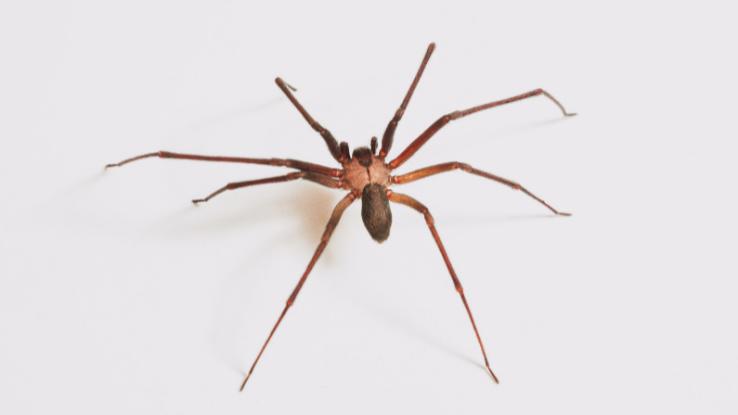
According to a 2002 study conducted by UC-Riverside and published in the Journal of Medical Entomology, Diane Barger had 2,055 brown recluse spiders in her Lenexa, Kansas, home, but her family did not receive any bites. The Bargers enjoyed slightly better luck than a Weldon Spring, Missouri, family that had to abandon their house when it was infested by an estimated 6,000 of these dangerous spiders.
17. Reef Stonefish
Although you might have a chance of spotting most marine threats before they harm you, some of the most dangerous aquatic creatures look just like a rock or sand. A master of camouflage, the reef stonefish has the uncanny ability to blend into its surroundings.
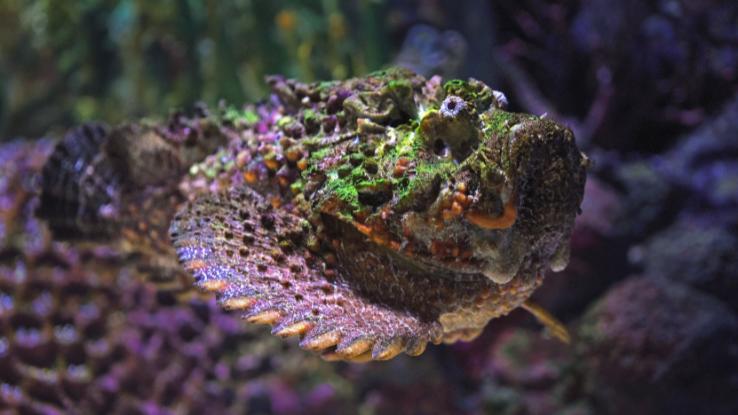
It is “the most venomous fish in the world, having venomous sacs on each one of its 13 spines,” according to PADI. If you like scuba diving, avoid touching any rocks or the sandy bottom, or your vacation could end a lot sooner than you planned.
16. African Bush Elephant
The largest land mammal on Earth, the African bush elephant is larger than its Asian cousin and can be easily identified by its wider ear flaps, which help the massive animal stay cool in triple-digit temperatures. Elephants’ exceptional intelligence and complex herd dynamics can make their behavior difficult to understand. For an article related to scientist Caitlin O’Connell’s book Elephant Don: The Politics of a Pachyderm Posse, National Geographic used the headline “Why Elephants Are As Ritualistic and Violent As the Mafia.”
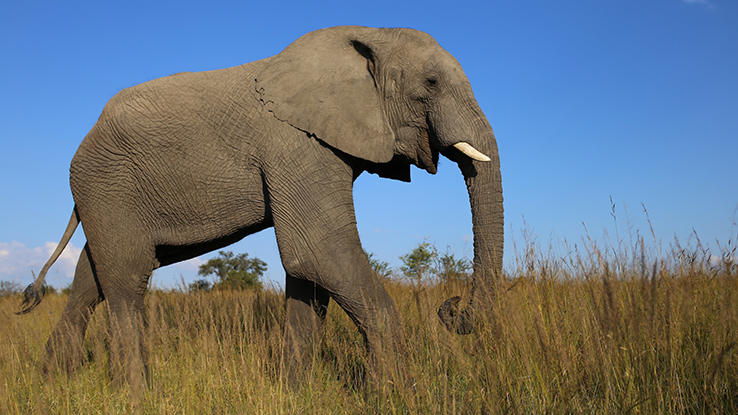
Despite their occasionally placid demeanor, elephants rampage when they feel threatened. Adult bulls are also subject to periodic bouts of “musth,” a state caused by heightened testosterone levels during mating season, resulting in unpredictable behavior and attacks on other animals and sometimes humans. The condition has been studied more extensively in Asian elephants but is also present in the African species.
15. White-Tailed Deer
White-tailed deer might look like cute, harmless wildlife to encounter on a leisurely hike, but their booming population growth has turned them into a nuisance for farmers and a serious danger on roadways. Car accidents involving deer occur more frequently during the fall and early winter, and striking an object weighing more than 100 pounds can sometimes have fatal results for drivers and passengers.
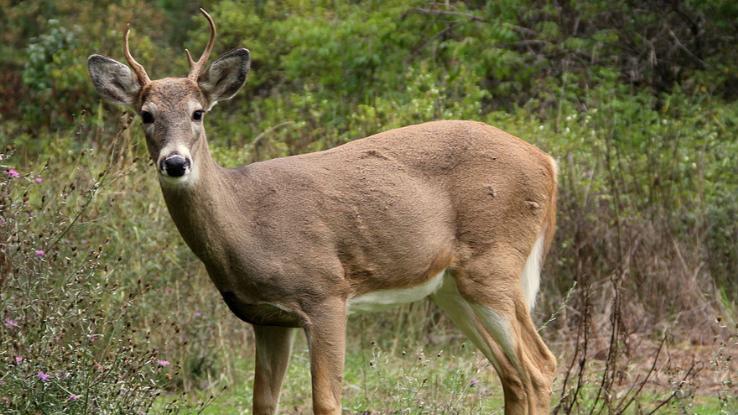
The Insurance Institute for Highway Safety reviewed 147 different fatal collisions with animals from 2000 to 2002 across nine different states and found that 77% involved deer. With an estimated 30 million white-tailed deer in the U.S., perhaps it’s not surprising they caused 1,941 deaths between 2007 and 2016.
14. Southern Blue-Ringed Octopus
The southern blue-ringed octopus is pretty to look at, but you should resist any temptation to touch it. As Ocean Conservancy helpfully points out, “This golf-ball sized powerhouse packs enough venom to kill 26 humans within minutes.” Its bite has one lethal neurotoxin via saliva glands, while its blood contains another neurotoxin.
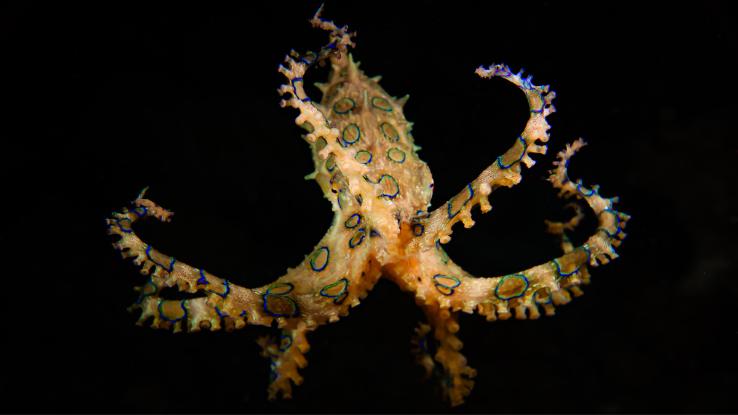
Because the octopus burrows into the sand in the shallows, these attractive little critters can wash up on shore. They could also end up in your pocket if your child picks up a couple of pretty shells from the beach to take home, as Perth native Aaron Pix discovered. To be safe, if you’re a tourist in Australia, don’t try to touch or hold an octopus. Take note that when this octopus turns a brighter shade of blue, it means it’s getting angry and plotting to kill you.
13. Leopard
Unlike lions that live in social groups called prides, the leopard is a solitary animal. Unfortunately, this big cat is more tolerant of human intrusions into their habitat, which places them dangerously close to humans at times. Although attacks are rare, a leopard that is sick, injured or having difficulty finding natural prey due to habitat loss is much more likely to attack a human. They have even been known to hunt human beings. Also, they are nocturnal, so forget about sleeping out under the stars during your safari.
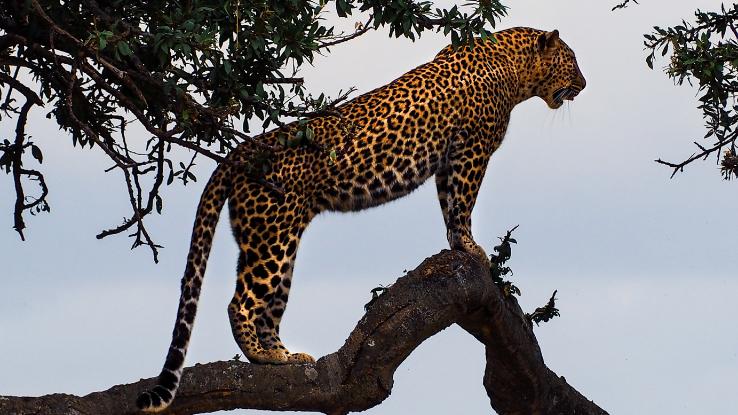
British hunter and author Jim Corbett tracked and killed numerous infamous leopards in India, including the “Man-Eating Leopard of Rudraprayag” and the “Champawat Man-Eater.” In total, he is credited with killing more than 30 leopards that caused more than 1,200 human fatalities. Nonetheless, the lethal threat remains today. In January 2019, a leopard caused mass panic in an Indian village for hours, injuring six people before being captured.
12. Arizona Bark Scorpion
Despite its small size of two to three inches in length, the Arizona bark scorpion has more powerful venom than any other scorpion in North America. Fortunately, it takes up to two weeks for these scorpions to regenerate their powerful venom, so they try to conserve it when possible by clutching their prey and eating it alive.
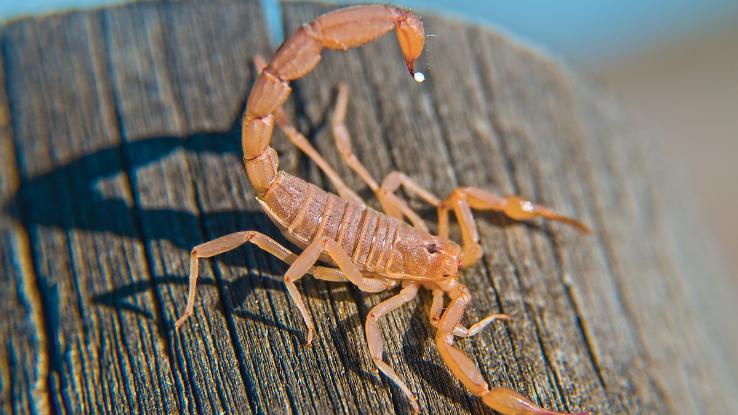
The scorpions sting thousands of people per year, but the stings are rarely fatal — just heinously painful for days. The majority of deaths from stings occur in Mexico, primarily due to long delays in receiving emergency medical treatment and a lack of antivenom at many facilities. Bark scorpions most often hunt at night, so switch your flip flops for closed-toe shoes or boots after the sun goes down.
11. Saltwater Crocodile
The saltwater crocodile actually preys upon humans if humans happen to be around. An encounter is unlikely, but if you’re near crocodile-infested waters, keep your head on a swivel, and don’t step on any lily pads with eyes. These reptiles can grow beyond 15 feet in length and weigh well over 1,000 pounds. They also range far from shore and are capable of swimming through open ocean more than 500 miles at a time.
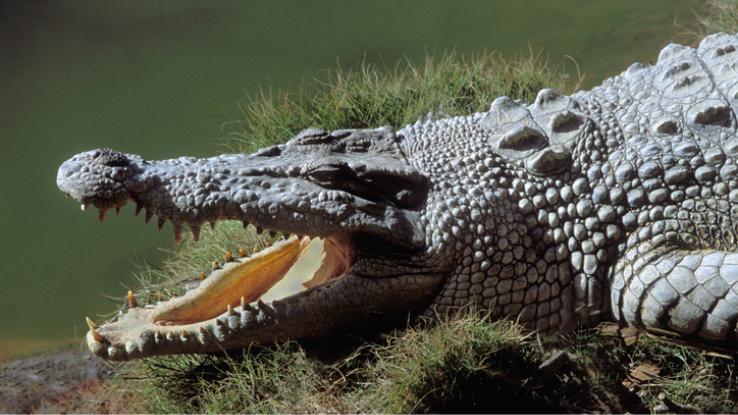
Following a study by Charles Darwin University, lead biologist Matthew Brien observed: “The saltwater crocodile has a reputation for being one of the most aggressive species in the world as an adult.” Their teeth are primarily for gripping, so they typically brutalize and drown their prey using the signature crocodile “death roll.”
10. MRSA
Sometimes referred to as “superbugs,” antibiotic-resistant bacteria have become an increasing concern around the world. According to the CDC, MRSA infected 80,000 people and caused 11,285 deaths in the U.S. in 2011 alone.
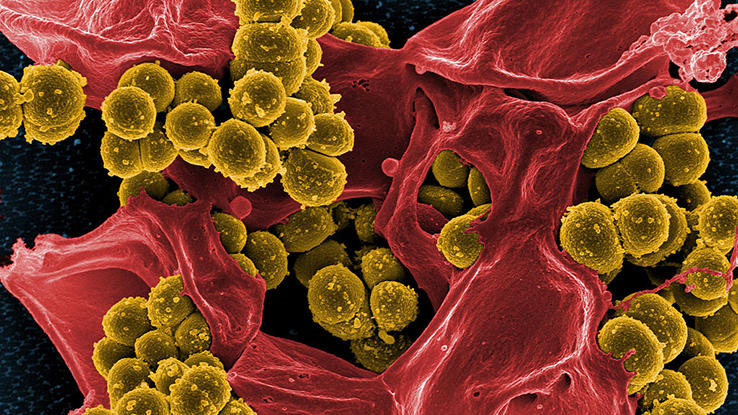
Often spread in hospitals, it is one of the most prominent superbugs that threatens to cause dangerous infections. Former NFL kicker Lawrence Tynes, a two-time Super Bowl winner with the New York Giants, contracted a MRSA infection at the Tampa Bay Buccaneers facility in 2013 that ended his career. He sued the team for $20 million, and the parties settled for an undisclosed amount in 2017.
9. North American Brown Bear
More commonly known as grizzly bears, North American brown bears can weigh more than half a ton and are “godless killing machines” — at least according to Stephen Colbert’s pundit character on The Colbert Report. Their possible atheism aside, it’s certainly true that hikers fear stumbling upon a mama bear with her cubs, as she is sure to fiercely protect them by shredding any perceived threat into submission.
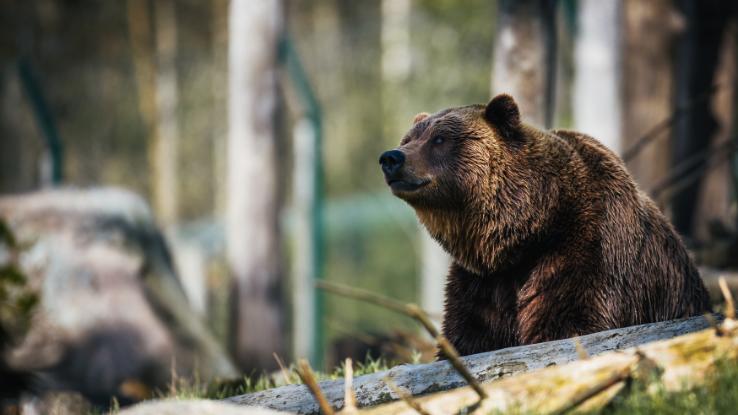
Sports Illustrated journalist Jack Olsen wrote a series of articles in 1969 that became the book Night of the Grizzlies, a chilling account of two fatal bear attacks in Glacier National Park in 1967. As noted by Smithsonian Magazine, visitors had “long conditioned the predators to seek food from humans, making the maulings somewhat inevitable.” Park staff shot three bears shortly afterward but also took important steps to reform human behavior near bear habitats, including controlling garbage disposal and fining and expelling campers who broke the rules. Yellowstone National Park, another grizzly habitat, also adopted the reforms.
8. Cape Buffalo
Lions are undoubtedly ferocious, with their sharp teeth and claws capable of inflicting significant damage and swift death, but another animal poses a more worrisome threat across Africa. The cape buffalo might resemble a lackadaisical cow chewing its cud, but this massive bovid can weigh more than 1,500 pounds and possesses a surprising mean streak.
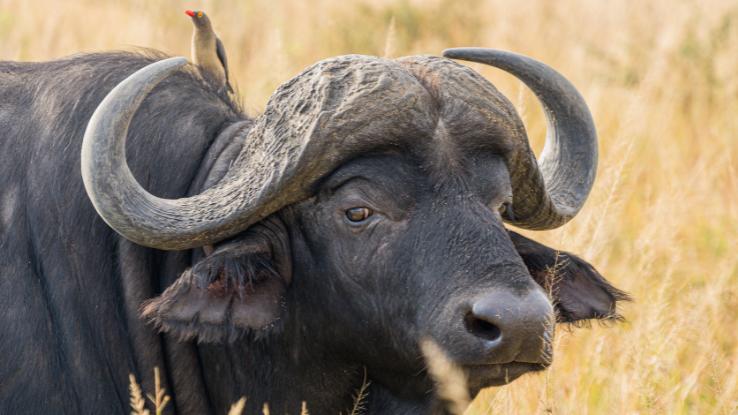
Their strength has been measured at four times that of an ox, and they have long memories, sometimes ambushing hunters who previously wounded them. They are known to charge without warning and can easily trample a human. To the locals, they are known as the “Black Death” and have allegedly “killed more big game hunters than any other animal in Africa.”
7. Moose
The largest member of the Cervidae (deer) family, a moose is actually far more dangerous than a bear. According to the Alaska Department of Fish and Game, “more people in Alaska are injured by moose than by bears each year.” They acknowledge that “most moose charges are bluffs, warning you to stay back,” but that does not mean you should think about calling its bluff.
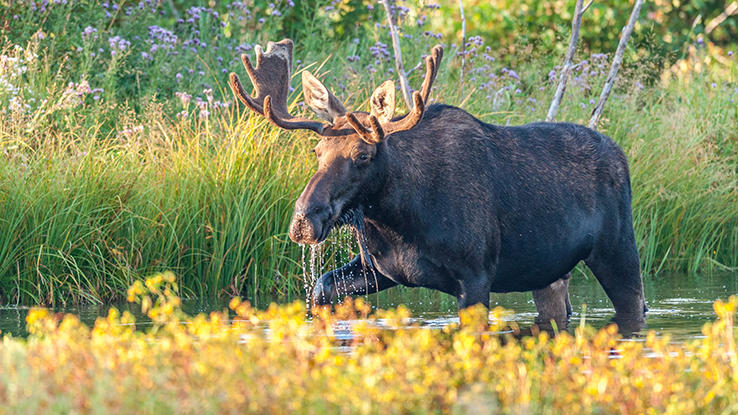
Don’t be lulled into a false sense of security by their lumbering appearance — or way too many episodes of Northern Exposure — because moose wield a fearsome, deadly power when they feel threatened. To put it in perspective, officials at Denali National Park caution that “a cow moose can defend itself against a full-grown grizzly.”
6. Golden Dart Frog
The golden dart frog,also known as the golden poison arrow frog, falls into the category of “pretty colors equals potent poison.” This frog has glands beneath the skin packed with 20 times the volume of poison found in other dart frogs, and the terrifyingly potent alkaloid toxin causes prompt damage to the nervous system.
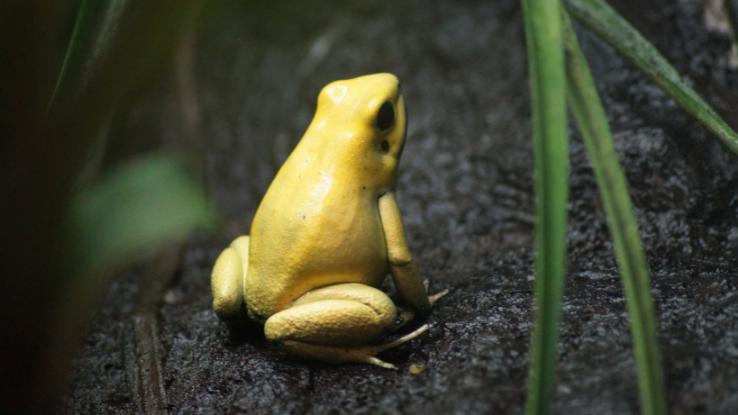
As noted by the BBC, a single frog has “enough poison to kill 10 grown men, making these frogs perhaps the most poisonous animals alive.” In fact, these creatures got their name from the Choco people of western Colombia, who used the poison to make highly effective blow darts for hunting.
5. Hippo
They may look chubby and cheerful, but that’s just the anthropomorphism talking. Imagine planning a once-in-a-lifetime birthday getaway to South Africa and Zimbabwe to see the wondrous Victoria Falls and more. Then, while canoeing down the picturesque Zambezi River on your dream trip, a hippo knocks you and your husband out of your canoe, drags you underwater and breaks your femur. That’s exactly what happened to a Florida woman in 2018 — and she was lucky.
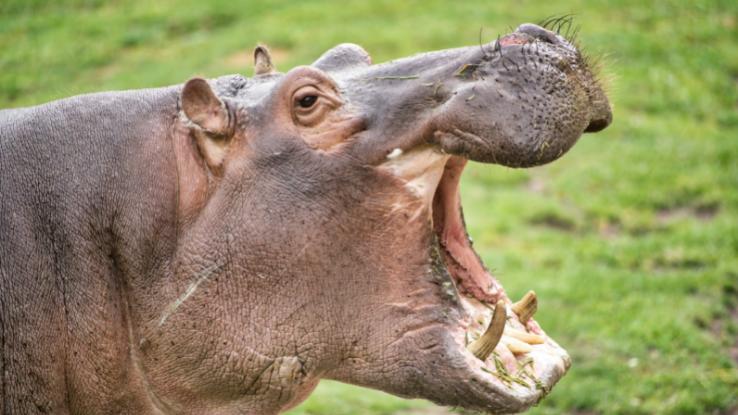
The Orlando Sentinel noted in their report that “hippos kill between 500 and 2,900 humans a year,” depending on which estimates you trust. Grown hippos can weigh between one and five tons and boast formidable incisors — sometimes known as “fighting tusks” — at the front of their mouths. Between their hulking size and aggressive nature, they pose a risk to anything that goes near them, even one of their own. Live Science observed: “During a fight between two adults, a young hippo caught in the middle can be seriously hurt or even crushed.”
4. Black Mamba
Quentin Tarantino named his lead character in Kill Bill after the extremely deadly black mamba and even featured the snake in the action. Former NBA legend Kobe Bryant also adopted the moniker. This snake can kill an elephant with its venom, so a human is really little more than an appetizer. They are aggressive but also frequently found in close proximity to humans — a bad combination.
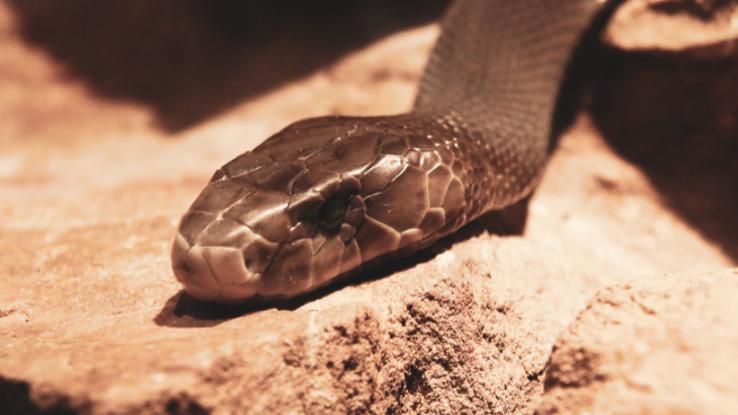
Kruger National Park in South Africa cautions: “Two drops of venom can kill a person, and a mamba can have up to 20 drops in its fangs.” The toxins simultaneously shut down the nervous system and the heart. After striking, the black mamba simply waits for its prey to die and then swallows it whole by dislocating its jaw, making it possible to consume “food up to four times the size of their head.”
3. Box Jellyfish
In the 2011 “Spooked” episode of The Office, Dwight, an amateur naturalist, asks Robert California’s son Bert, “I suppose you’re going to tell me the scariest animal is a shark?” Bert responds, “Try a box jellyfish,” greatly impressing Dwight. Ranking among the most venomous creatures on the planet, the box jellyfish can have tentacles up to 10 feet long, and it can swim to cover a broader range, unlike most jellyfish that merely float. They also have 24 sophisticated eyes, some with distinct parts — lens, cornea, iris and retina — similar to humans. All the better to see you with, apparently.
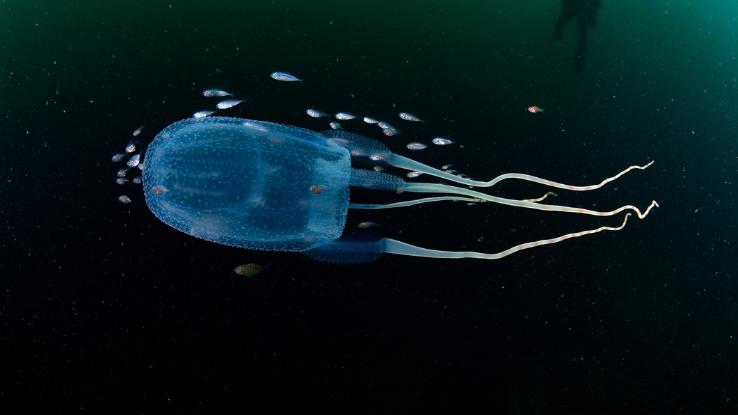
A sting can cause anaphylactic shock or heart failure, leading to drowning for many human victims. According to the U.S. National Science Foundation, as many as 40 people per year suffer fatal stings from box jellyfish, just in the Philippines. However, “death certificates are not required in many countries within the range of box jellyfish, so worldwide fatalities from box jellyfish may be seriously underestimated.” Even non-fatal stings typically remain painful for weeks.
2. Schistosoma Japonicum Parasite
Unseen threats are sometimes the most dangerous of all. The schistosoma japonicum parasite can infect many different species, including humans. The parasite spreads when infected humans contaminate freshwater sources, particularly when those sources have certain aquatic snails that can rapidly multiply the parasite and spread schistosomes that are then absorbed by humans through their skin, potentially damaging the liver, bladder and other vital organs.
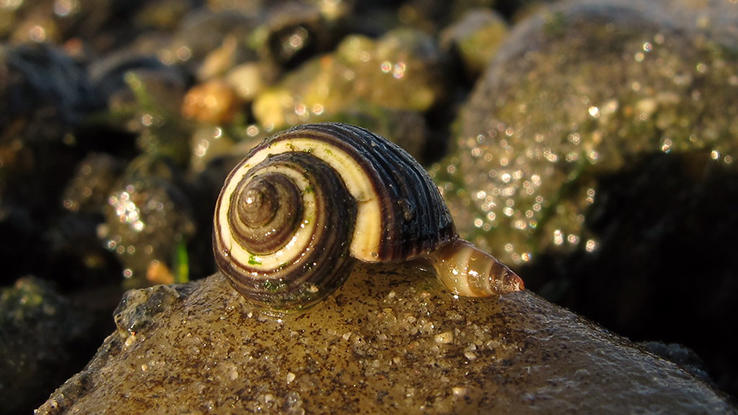
A major concern in Africa as well as Asia and parts of South America, the parasite kills an estimated 200,000 people per year. The World Health Organization found that more than 200 million people are infected, and an additional 700 million are at risk of infection.
1. Mosquito
The thousands of species of mosquito serve as a nuisance to most people, but they pose a mortal danger to millions of people worldwide. In fact, philanthropist Bill Gates has made malaria treatment one of his chief philanthropic causes. According to his Gates Notes blog, malaria “kills more than 600,000 people every year; another 200 million cases incapacitate people for days at a time. It threatens half of the world’s population and causes billions of dollars in lost productivity annually.” Unfortunately, the world’s poorest and most vulnerable people have the greatest risk.
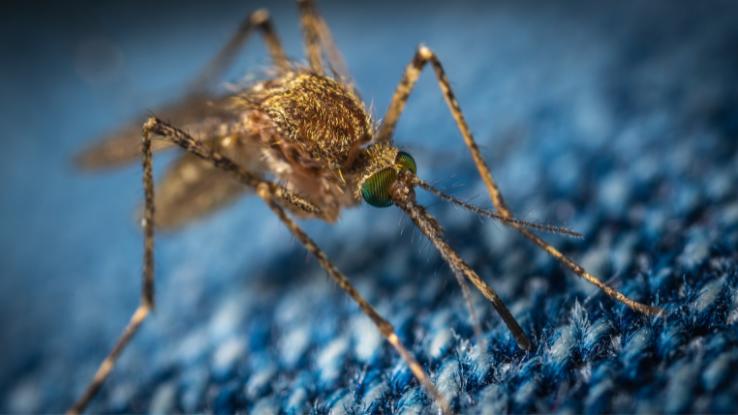
Even worse, the deadly threat of malaria isn’t the only malady mosquitoes convey. If you’re smart, you also fear Chikungunya, West Nile, Zika, dengue fever, yellow fever and plenty of other ailments. Golf fans may remember that top-ranked players Jason Day, Dustin Johnson and Rory McIlroy all withdrew from the 2016 Rio Olympics, citing fear of Zika virus exposure. If you take the proper precautions to limit exposure to bites, mosquito-borne illnesses usually remain a low-level concern.
Fun fact: You can use the music of Grammy-winner Skrillex to repel mosquitos. The music’s many low-frequency vibrations are a natural deterrent.






